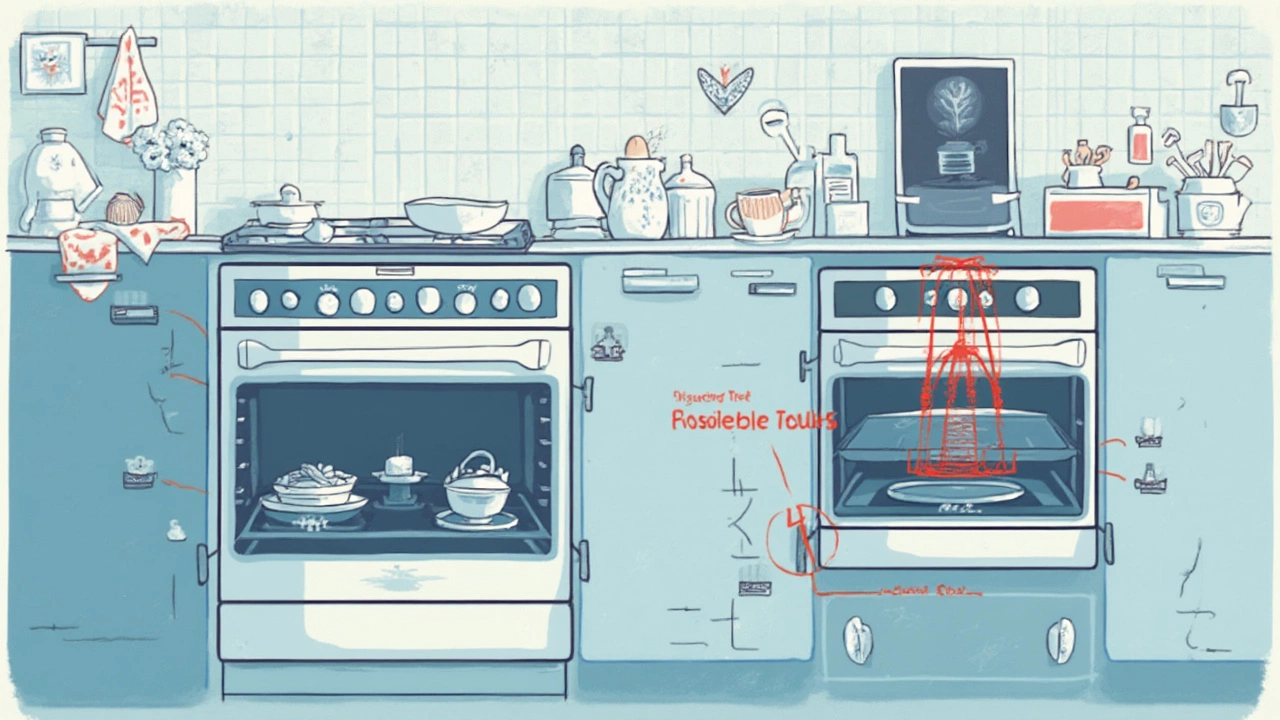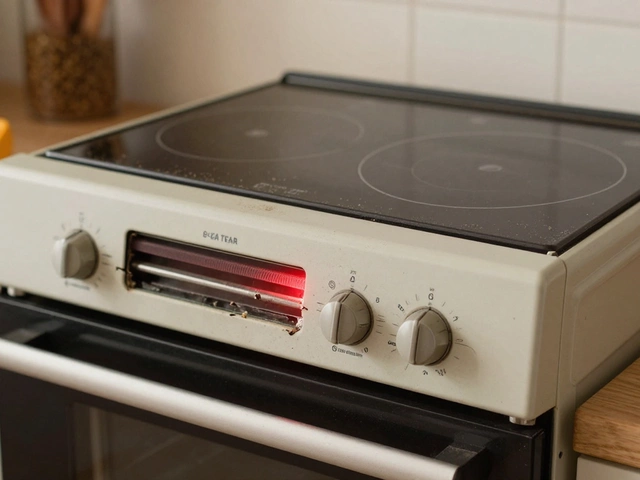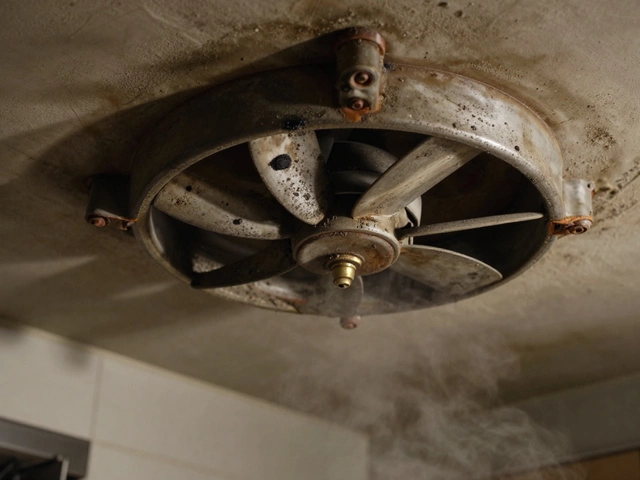Your oven doesn’t heat up, smells kind of like gas, or takes forever to cook a pizza—yeah, that’s a headache nobody needs. Most people blame the thermostat or even the gas line, but way more often it's the igniter causing all the drama.
Here's the thing: a bad oven igniter is sneaky. It might work sometimes, sputter other times, or just give up completely. You don’t have to be a tech whiz to spot the warning signs. Sometimes it’s about how the burner lights—or doesn’t. Maybe you catch a weird ticking sound or notice your food isn’t browning like it used to. That’s the igniter dropping the ball.
The good news? You can pin down the problem without digging into the oven with a toolbox. A quick look, a little patience, and a couple of minutes of observation can tell you a lot. Want to figure out if your oven’s acting up because of the igniter? I’ve got you covered. Keep reading, and you’ll know what to check before calling anyone for help (or ordering takeout—again).
- What Exactly Does the Oven Igniter Do?
- Classic Signs Your Igniter Is Failing
- Troubleshooting: What You Can Check Yourself
- When to Call a Professional (and How to Save Money)
What Exactly Does the Oven Igniter Do?
If you’re not sure what’s going on inside your gas oven, the igniter is basically the unsung hero that gets the whole thing cooking. It’s a small part—and not flashy at all—but your oven won’t work without it. The igniter’s main job is to heat up and ignite the gas, which is what creates that steady, even heat for baking or roasting.
Here’s how it usually goes down every time you turn on your gas oven:
- The oven control sends power to the igniter when you want to preheat the oven.
- The igniter heats up (it actually glows orange), and while it’s doing this, it draws electric current.
- Once it gets hot enough, it allows the oven gas valve to open.
- The gas flows out, the hot igniter lights it up, and boom—the burner’s going.
What’s wild is that your oven won’t let any gas flow until the igniter gets properly hot. This is a safety thing—it stops gas leaks, so you aren’t accidentally filling your kitchen with fumes every time you bake cookies. Most gas oven igniters need to hit about 1100°F (593°C) to work correctly. If it doesn’t get hot enough, the gas valve stays closed, and nothing happens.
Curious how important this little part is compared to others? Check out this quick table:
| Oven Part | Main Job | What Happens If It Fails? |
|---|---|---|
| Gas Oven Igniter | Lights the gas so the oven heats | No heat, weak heat, or no gas flow at all |
| Thermostat | Monitors and adjusts oven temp | Inaccurate baking, overheating, or undercooking |
| Gas Valve | Lets gas flow to burners | No flame, possible gas smell |
So when your oven won’t start or only gets kinda warm, the gas oven igniter is usually the first thing to check. They do wear out after a few years, especially if you cook often.
Classic Signs Your Igniter Is Failing
If your oven isn’t working right, there’s a good chance the igniter is at fault. Here’s what you want to look out for so you’re not left guessing what’s wrong.
- Oven won’t heat at all: If you set your oven to bake but it never gets warm, that’s a huge red flag. No heat usually means the igniter isn’t getting hot enough to open the gas valve.
- Slow to ignite: If your oven takes longer than usual (like two minutes or more) to fire up, the igniter may be wearing out. A healthy ignition should take under a minute from when you turn it on.
- Clicking or ticking sounds: Sometimes you’ll hear a constant clicking noise but the oven doesn’t light. This is the igniter trying (and failing) to light the gas.
- Smell of gas: If you notice that classic rotten egg smell but your oven’s not lighting, the igniter isn’t doing its job. Never ignore a gas smell—turn the oven off, open a window, and don’t try to use it again until it’s fixed.
- Food cooks unevenly: Does your food have cold spots, or come out undercooked on the bottom? A weak igniter can’t get the gas going right, so your oven temperature is all over the place.
- Oven light is on, but nothing happens: This one’s sneaky. Everything looks normal, but the oven just sits there cold because the igniter isn’t hot enough.
Here’s a quick cheat sheet of common gas oven igniter symptoms you’ll see if things are going south:
| Symptom | What You'll Notice |
|---|---|
| No heat | Oven never gets warm |
| Takes forever to start | Oven finally lights after 2-3 minutes |
| Clicking noise | Repeated ticks with no ignition |
| Gas smell | Rotten egg odor, oven doesn't start |
| Uneven cook | Food not done or cold in spots |
A bad igniter can make you think your whole oven is busted, but it’s often just this one part. If you spot any of these issues, chances are you’re dealing with a failing igniter. Catching these signs early saves money and prevents bigger headaches (or ruined dinner).

Troubleshooting: What You Can Check Yourself
If you think the problem is a bad igniter, you don’t need a toolbox full of fancy tools or a degree in electrical engineering. But you do need a little patience and to pay attention to how your oven behaves.
Here are the steps to take before you call in a pro:
- Gas oven igniter symptoms usually start with your oven not heating at all, or taking forever to reach the set temperature. Turn it on and pay attention to how long it takes for the burner to ignite. If it’s more than a minute, you’re seeing a classic symptom.
- Look for the glow. The igniter should glow bright orange after you turn the oven on. If the glow is weak, dim, or not there at all, your igniter’s probably failing. Don’t confuse the glow with proper function—it can be glowing and still too weak to open the gas valve.
- Listen for clicks or the sound of gas. If you hear gas flowing but nothing lights, turn the oven off and don’t try again (the risk of a gas buildup is not worth it). That’s a sign the igniter isn’t doing its job.
- Smell for gas. If you smell unburned gas and the oven hasn’t lit after a minute or so, shut it off and ventilate the kitchen. This usually means the igniter isn’t hot enough to trigger the burner, letting gas leak through.
- Check the baking results. Uneven or undercooked food, even after using the right settings, could mean the oven isn’t reaching full heat—again, often the igniter’s fault.
You can visually inspect the igniter, which is a small stick or bar near the burner tube in the bottom of the oven. If it looks cracked, discolored, or has white buildup on it, it’s a bad sign. Most igniters should last between 3-5 years, but constant use or power surges can shorten their life.
Never poke or prod at the igniter while the oven is plugged in or turned on—these things run on high voltage and can shock you. Stick to visual checks unless you know exactly what you’re doing. If you see or smell anything really off, like strong gas odors or sparking, stop and call a professional.
Doing these checks doesn’t take long. You’ll save yourself frustration and might even avoid shelling out for a useless part you don’t really need.
When to Call a Professional (and How to Save Money)
Sometimes, you just hit a wall. If you’ve checked the basics—like making sure the oven is plugged in, the circuit breaker didn’t trip, and you don’t see obvious grease or food blocking the igniter—but your oven still won’t heat, it’s probably time to let the pros handle it. Messing around with gas appliances can get risky fast if you’re not sure what you’re doing.
Here’s when you should definitely pick up the phone:
- Your oven smells like gas, even when it’s not running. That could mean a leak. Don’t risk it—call a professional right away, and open some windows.
- The igniter glows but the burner never lights, or you see no glow at all when you turn the oven on. These are signs the igniter just doesn't have enough juice or is completely dead.
- You checked the wiring and connections, but nothing looks out of place—sometimes there’s an issue hidden deeper inside that needs special tools to diagnose.
- You tried a DIY igniter replacement, but now the oven still won’t start or it’s sparking weirdly. Don’t push your luck and risk blowing a fuse (or worse).
Saving money with this stuff is all about being prepared. First off, if your oven is still under manufacturer’s warranty, don’t even touch it—call customer service and explain the gas oven igniter symptoms. Repairs might be free. For older ovens, before shelling out for a service call, check appliance repair company reviews online. Some do simple igniter swaps for a flat fee, while others charge just for showing up. If you’re handy and feel safe, you can find the igniter online (search using your oven’s model number), but always watch a couple of videos to see what really goes on—knowing what you’re in for can save you from paying double if you have to call someone after all.
Bottom line? Don’t mess with gas leaks or cracked wires. For everything else, do a quick check on YouTube to see if your problem is common—sometimes it’s a simple fix, sometimes it isn’t. When it gets dicey, though, better to save your eyebrows (and your house) and call a pro.




